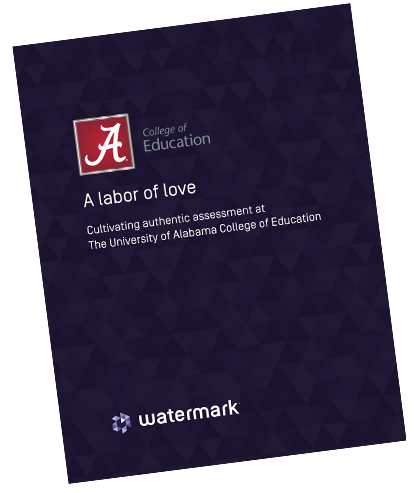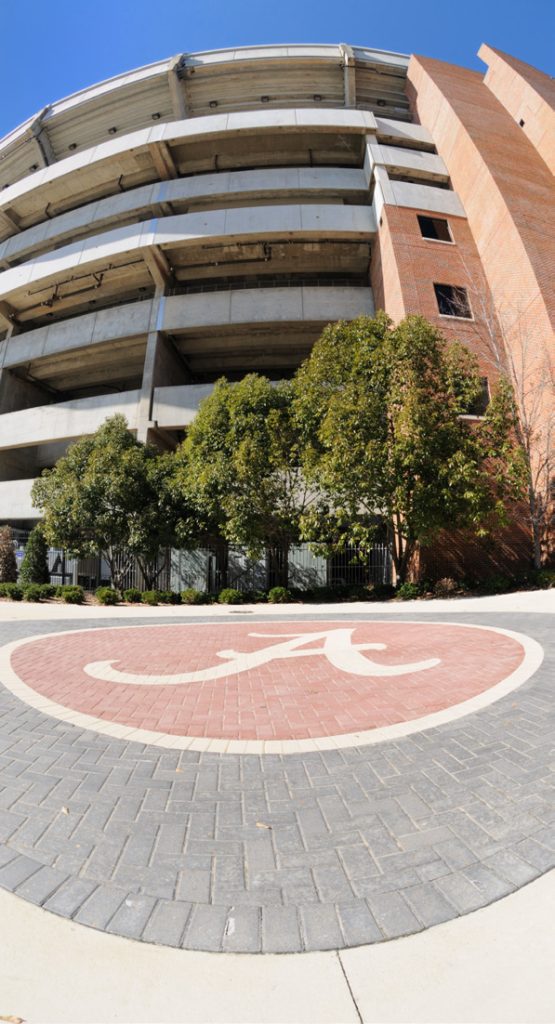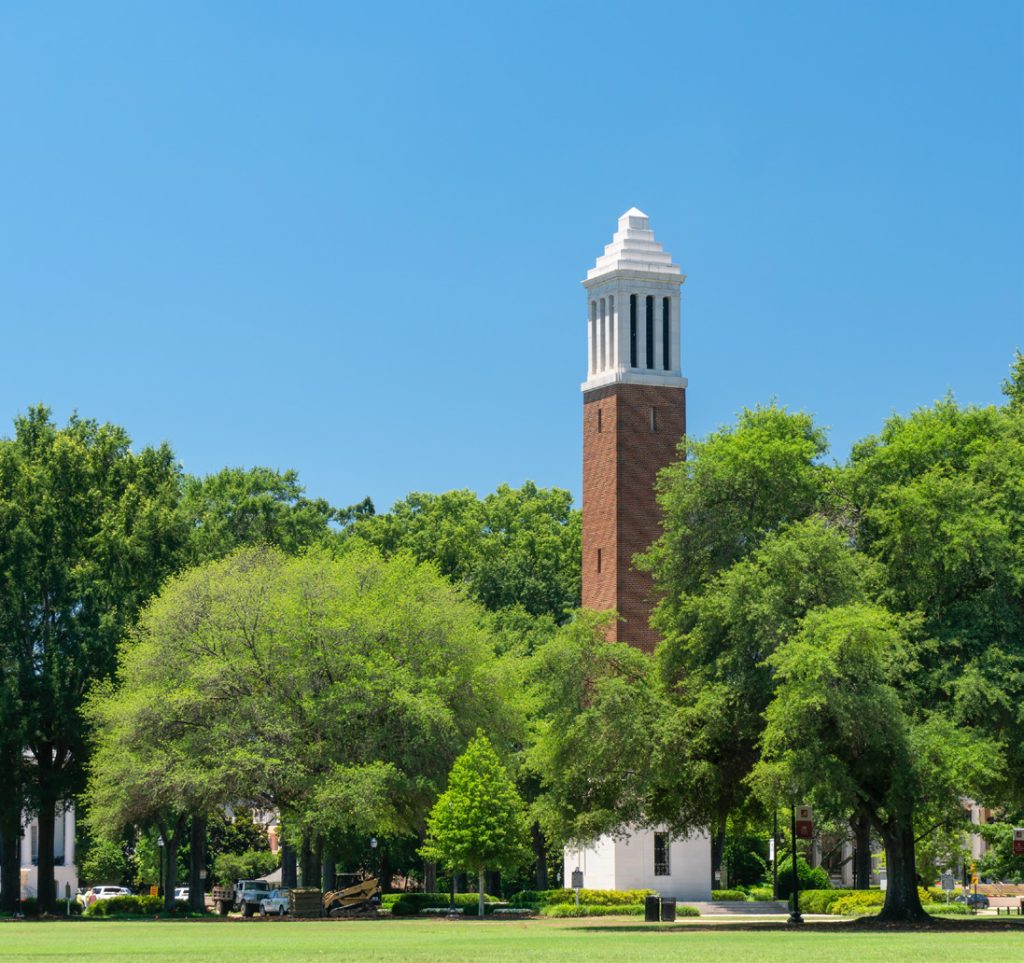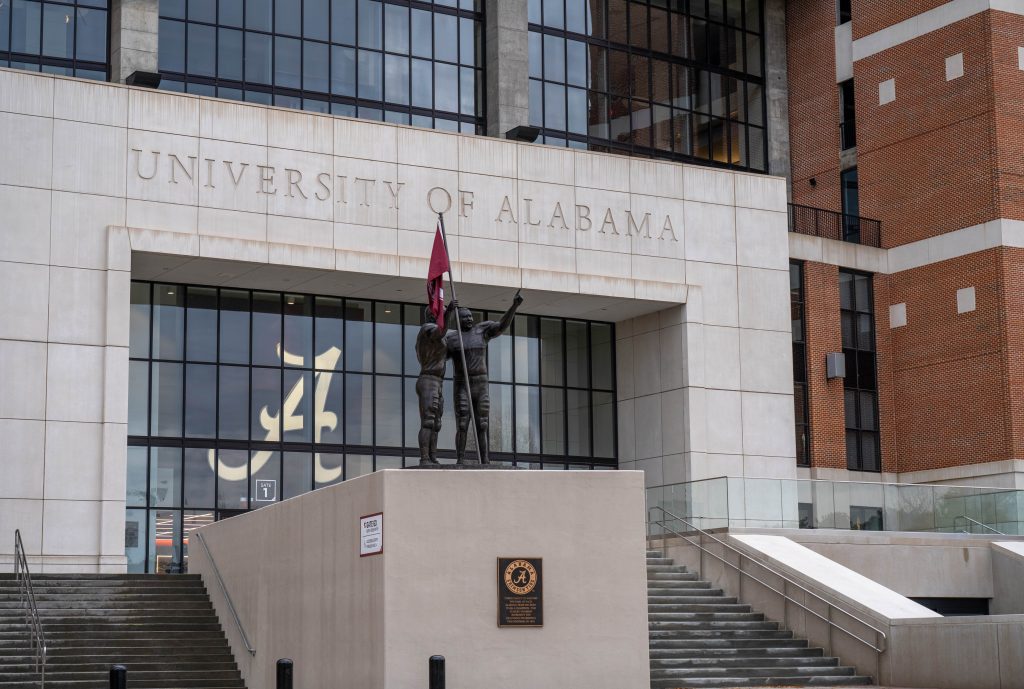
*The University of Alabama in Tuscaloosa is one of three campuses in The University of Alabama System, all of which are governed by The University of Alabama Board of Trustees.


“A meaningful assessment process takes time to curate. It’s not a one-time event. It will not be brainstormed, created, and implemented in one meeting or even over the course of just a semester.”
The University of Alabama College of Education Assessment Team
Dr. Liza Wilson (Interim Dean, Professor)
Dr. Emily Sims (Associate Dean and Certification Officer, Clinical Associate Professor)
Dr. Akeisha Young (Director of Accreditation and Assessment, Assistant Clinical Professor)
Dr. James Hardin (Coordinator of Technology Applications and Assessment Systems, Clinical Associate Professor)
Dr. Lisa Matherson (Coordinator of Continuous Improvement, Clinical Associate Professor)
Mrs. Diana Winchester (Clinical Instructor of Student Assessment and edTPA)
“If I am a master teacher, do you know what I hope I’m teaching you? That love will take care of everything in our world.”

Made up of 6 departments, 29 undergraduate and graduate majors, and 112 certification programs, the College of Education’s mission is organized around this basic principle: purpose as love, and love as service. It is through this principle and the COE’s excellence in teaching, scholarship, advocacy, and service that the College of Education at The University of Alabama is able to develop educational leaders and professionals who 1) support democracy and social justice for all and 2) advance the intellectual and social conditions of all learners in globalized society.
The University of Alabama, the state’s largest and oldest public institution, is well-acquainted both with the importance of tradition and the necessity of change. As with the change within The University of Alabama about a decade ago, the COE recognized the need to change its culture and reimagined a new collaborative culture that highlighted assessment with a data-first mindset.

These numerous processes, combined with legacy systems that had been firmly in place over the last ten years, posed a problem: “Everybody wanted something different,” recalls Dr. Liza Wilson, Professor and Interim Dean of the COE.
After coming together with their faculty, students, staff, and other stakeholders, the COE was able to locate some recurring themes:
With various accreditors, assessment reports, and associated activities came isolated processes, extra work, and inefficient use of resources — all things that made faculty’s roles much more difficult.
Working in silos resulted in several people working on the same tasks but with different tools or sets of standards. This created unnecessary labor and inconsistent results.
Digital sprawl meant that not only were people doing redundant work using different tools across departments, but also that individuals were overwhelmed with too many tools, creating inefficiencies and confusion.
People were using the same rubrics with significant discrepancies, causing skewed data.
The COE recognized that many of its programs had their own accrediting agencies that led to a multitude of continuous improvement processes. These numerous processes, combined with legacy systems that had been firmly in place over the last ten years, posed a problem.
The College of Education knew they needed to deconstruct and reimagine their existing systems to arrive somewhere new — at a culture of continuous improvement that would benefit both the COE’s students and its faculty by being intentional in its purpose to gain a clearer picture of areas where the COE was excelling and areas where it could benefit from more targeted efforts. With this in mind, they set out to develop a more streamlined assessment process that incorporated data-informed practices and tools for improvement that would last.
To start, COE established a multi-year, compact plan for continuous improvement that could be broken down into three steps.
Using a strategic set of questions that focused on outcomes, curriculum, assessment, analysis of results, and program improvement, the COE had discussions with various stakeholders, faculty, staff, and students to explore the questions that were most pertinent to individuals within these different groups.
As part of its assessment system, the COE highlighted the importance of and implemented
a system centered on shared governance. Their two-pronged process focused on student performance and program quality in one sphere, and college operations in another. The COE Assessment Committee, made up of select representatives from COE departments along with faculty from the College of Arts and Sciences and College of Communication and Information Sciences, collaboratively oversaw student performance and program quality. Meanwhile, the Dean of the College of Education and the COE’s Leadership Council collaborated to oversee college operations.
COE examined assessment and reporting processes required of their programs from all of their entities, such as the university, college, and national and state agencies, and brought them together under one umbrella. Under this umbrella, the assessment committee and the assessment staff worked together to achieve a culture of collaboration defined by greater authenticity, increased efficiency, and actionable data. Led by the Assessment Committee, COE worked to establish open lines of communication among students, faculty, and staff by finding opportunities for reflection and a collaborative assessment of the college’s progress. Changing their portfolio review process, for example, was particularly impactful.
As part of its assessment system, the COE highlighted the importance of and implemented a system centered on shared governance.
Previously, the portfolio had been a tool used to meet checklist requirements, but there was nothing built into the process that encouraged long-term growth, such as revisiting skills at a later date for comparison. Now, portfolios are reviewed through a system that involves three checkpoints selected over the course of the student’s program of study. Results allow COE to examine and compare the growth of not only individual students but also students across academic programs.
“We’re really exploring ways to use Planning & Self-Study to do our annual reports and also some program review — and it being able to connect with Student Learning & Licensure, which is where we do our portfolio systems.”

At COE, they know that this work is ongoing. To achieve such a cultural shift every day — from being a college that simply “does assessment” to one that holds authentic, continuous improvement as a driving value — COE has to be willing to engage in difficult conversations.
When reflecting on how the COE engaged in these difficult conversations and transformed them into
something productive, The University of Alabama College of Education Assessment Team begins by opening dialogue:
“What does continuous improvement mean? What does continuous improvement look like?” These, they say, are the questions institutions must ask themselves as they embark on building a culture of assessment. “A meaningful assessment process takes time to curate. It’s not a onetime event. It will not be brainstormed, created, and implemented in one meeting or even over the course of just a semester.”
It’s a transformation that never stops. And for COE, this is a challenge they’ve grown to love.

See how our tools are helping clients right now, get in-depth information on topics that matter, and stay up-to-date on trends in higher ed.